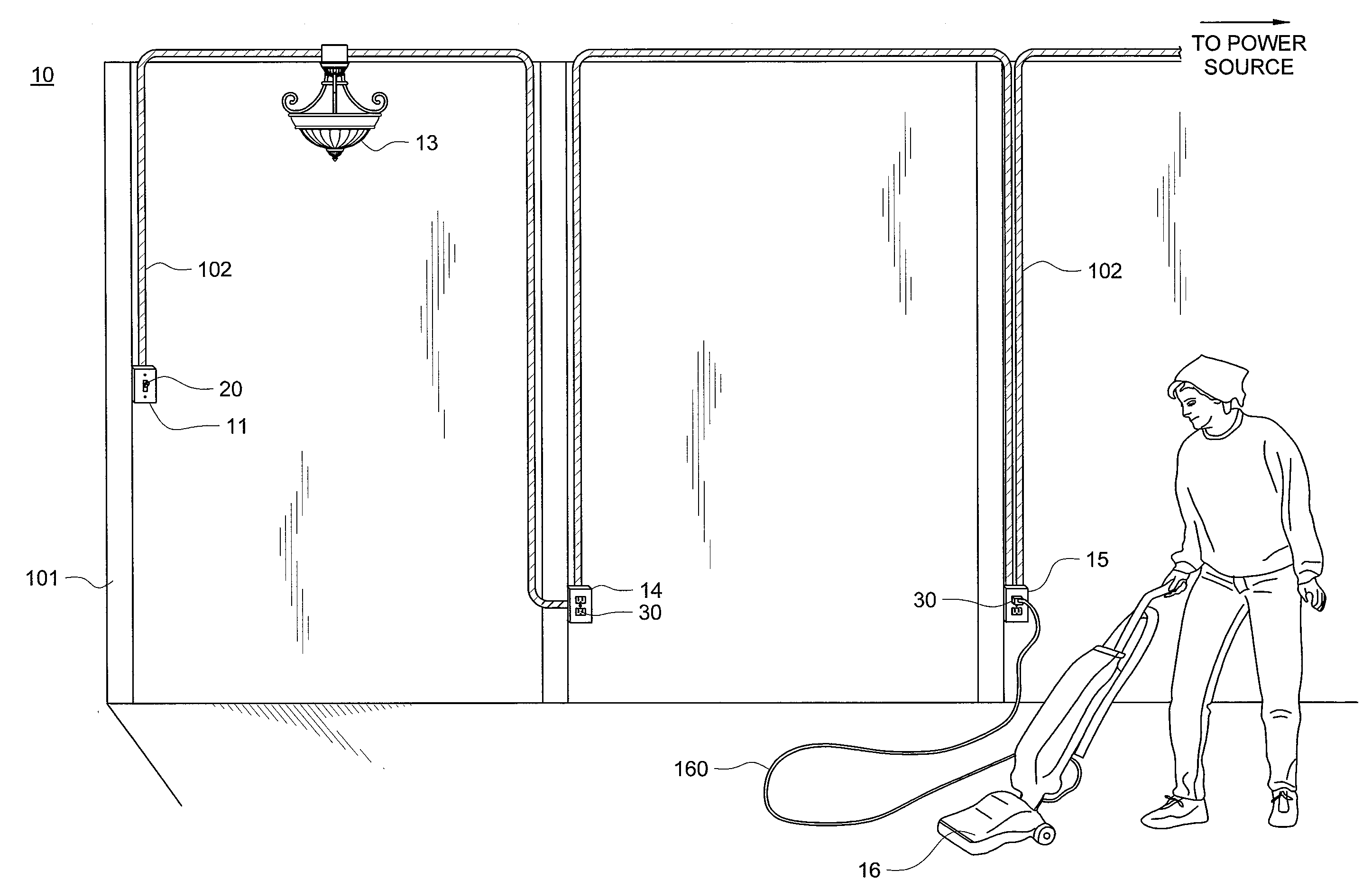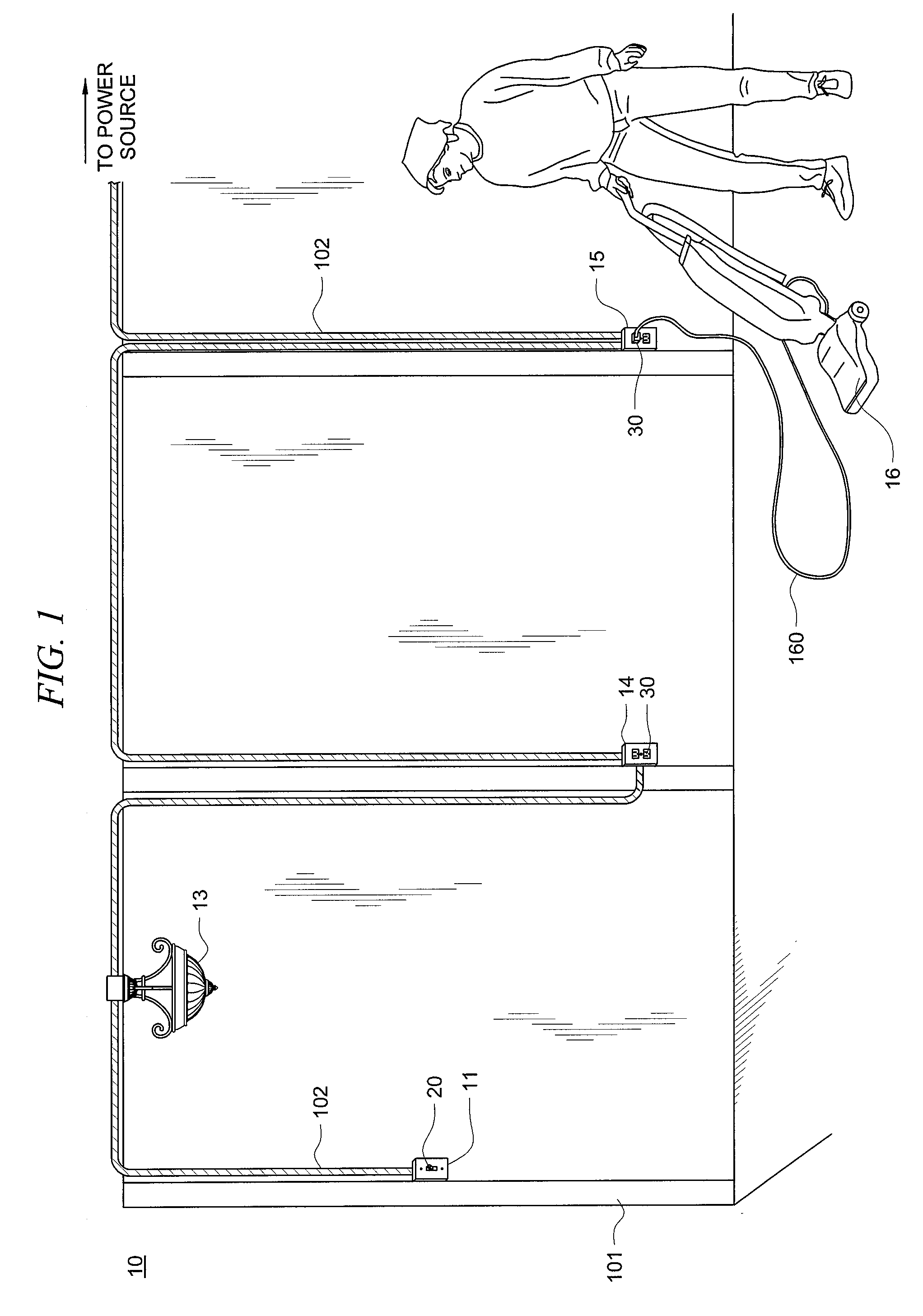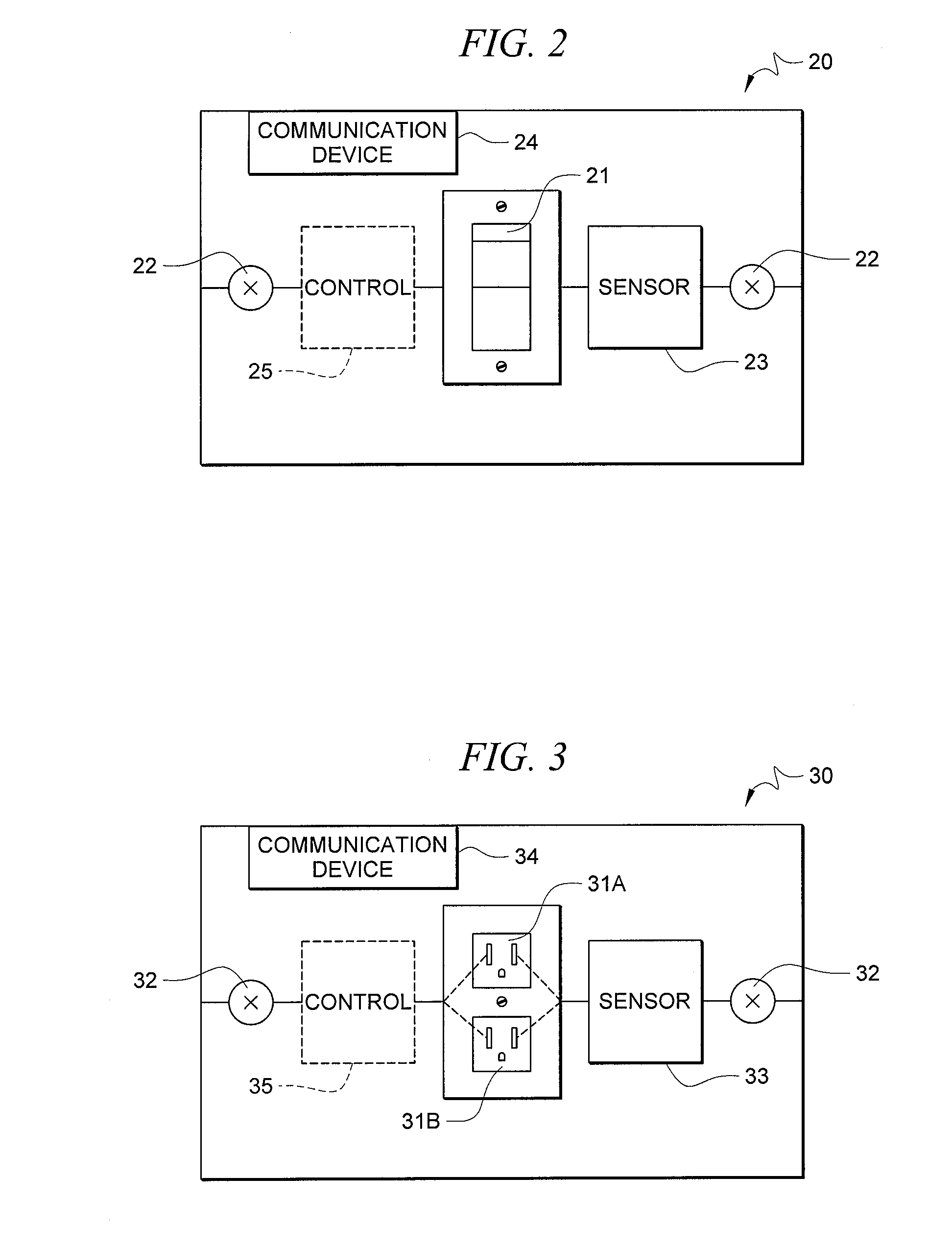System and Method for Premises Power Parameter and Power-Factor Reporting and Management
a technology of power parameter and power-factor, applied in the field of premises power, can solve the problems of inability to verify with real-world measurement, complex electrical power consumption measurement and distribution, and exacerbating the ability to generate accurate or even reasonable load models
- Summary
- Abstract
- Description
- Claims
- Application Information
AI Technical Summary
Benefits of technology
Problems solved by technology
Method used
Image
Examples
Embodiment Construction
[0019]Note that the discussion below is centered around power factor and power parameter monitoring and control at end-point devices. The term power-factor, while only being one sub-set of power modeling, is used herein as an example only to include any and all aspects of power measurements. Any and all aspects of power consumption, supply and management can be handled using the concepts discussed herein with respect to any and all load profiles.
[0020]FIG. 1 shows one embodiment 10 of a premises having end-point power parameter monitoring. Premises electrical wiring 102 is shown, in one embodiment, attached to studding or other framework of the premises. The premises can be a home, office, apartment, industrial building or complex in which a number of locations, such as locations 11, 14 and 15 have electrical control devices, such as devices 20 and 30, positioned thereat. In the embodiment shown, locations 11, 14 and 15 are electrical utility boxes permanently mounted to the premise...
PUM
 Login to View More
Login to View More Abstract
Description
Claims
Application Information
 Login to View More
Login to View More - R&D
- Intellectual Property
- Life Sciences
- Materials
- Tech Scout
- Unparalleled Data Quality
- Higher Quality Content
- 60% Fewer Hallucinations
Browse by: Latest US Patents, China's latest patents, Technical Efficacy Thesaurus, Application Domain, Technology Topic, Popular Technical Reports.
© 2025 PatSnap. All rights reserved.Legal|Privacy policy|Modern Slavery Act Transparency Statement|Sitemap|About US| Contact US: help@patsnap.com



